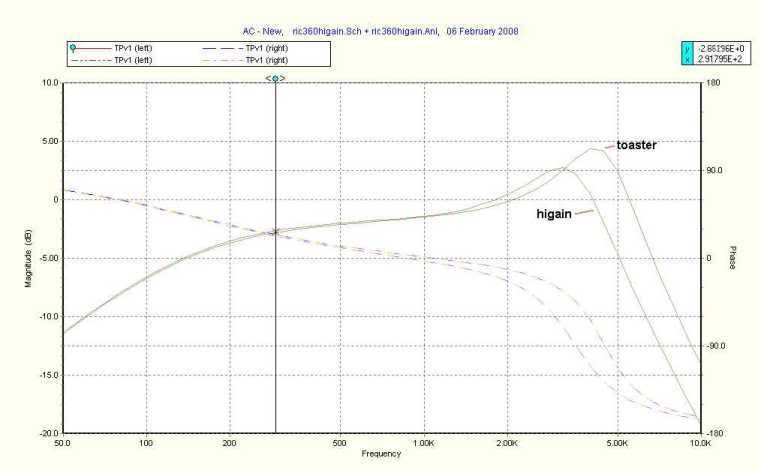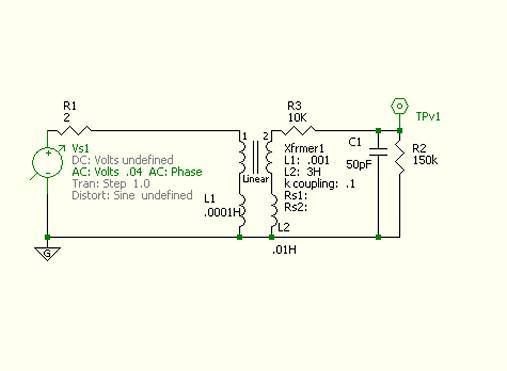Sorry, I was off for a bit as I have a deadline to build a bunch of very high power transducers.
For a living I used to listen to speakers, phono cartridges, microphones, etc and try to put numbers on sonic impressions. I needed very badly to be able to do that, because I designed them.
We were all trained enough to hear and identify fairly simple resonances...a 6 db peak at 5K and a 4 db notch at 200 or something like that could be easily identified by ear.
When things got more complicated we had to resort to descriptions like "hollow", "boxy" , "thick", etc.
Our take at Shure was like this: The ear/brain is trained to use multiple complicated resonances (like comb filtering) to get spatial information. In a sense we use these much like bat or dolphin echo location. For example the resonant modes of a square box can give us an aural impression of a box! A blind person can tell the rough dimensions of a room just from the sounds heard. It's not time domain echo location but the frequency response effects of delays we process.
Here's the thing... You recall that I am fortunate to have an Agilent impedance analyzer in the lab right now, and for grins I hooked it up to a guitar pickup in place. There are all sorts of things going on there....a real sqiggly line. In the impedance data I can easily see body resonance, shorted turn effects, and more.
On top of that recall that the string motion consists of travelling waves along the string. As these waves pass through the pickup field area there will be powerful comb filter effects from the time delays involved.
So yeah, complex resonances happen in pickups that could only be described by terms like quack, thick, edgy, etc. They are much less pronounced generally compared to the self resonance... which is the primary sound coloring phenomina.
Will a driven coil tester energize all these effects? No, I don't think so. But it might give some useful information. I think my pickup SPICE model will be about as good.
Oh funny thing....I was messing with transformers connected to the ric 12 string. A step down certainly raises the self resonance, but the primary self inductance interacts with the series cap in the bridge pickup to create a big peak in the lower mids...about 180 hz. I saw it on the spice model, I heard it on my guitar... AND I heard it on the Byrds mr tambourine man!! So they used a transformer coupled direct in and I can hear it!!
I came here to get pickup data just so I could get toaster sound from a higain. By putting in those resonances I think I have gotten very very close. Not exact, because the mag fields are not the same. But it's about 90% there. I think that's what analyzers, spice models, and testers can do. Some things they just aren't going to show though.
For a living I used to listen to speakers, phono cartridges, microphones, etc and try to put numbers on sonic impressions. I needed very badly to be able to do that, because I designed them.
We were all trained enough to hear and identify fairly simple resonances...a 6 db peak at 5K and a 4 db notch at 200 or something like that could be easily identified by ear.
When things got more complicated we had to resort to descriptions like "hollow", "boxy" , "thick", etc.
Our take at Shure was like this: The ear/brain is trained to use multiple complicated resonances (like comb filtering) to get spatial information. In a sense we use these much like bat or dolphin echo location. For example the resonant modes of a square box can give us an aural impression of a box! A blind person can tell the rough dimensions of a room just from the sounds heard. It's not time domain echo location but the frequency response effects of delays we process.
Here's the thing... You recall that I am fortunate to have an Agilent impedance analyzer in the lab right now, and for grins I hooked it up to a guitar pickup in place. There are all sorts of things going on there....a real sqiggly line. In the impedance data I can easily see body resonance, shorted turn effects, and more.
On top of that recall that the string motion consists of travelling waves along the string. As these waves pass through the pickup field area there will be powerful comb filter effects from the time delays involved.
So yeah, complex resonances happen in pickups that could only be described by terms like quack, thick, edgy, etc. They are much less pronounced generally compared to the self resonance... which is the primary sound coloring phenomina.
Will a driven coil tester energize all these effects? No, I don't think so. But it might give some useful information. I think my pickup SPICE model will be about as good.
Oh funny thing....I was messing with transformers connected to the ric 12 string. A step down certainly raises the self resonance, but the primary self inductance interacts with the series cap in the bridge pickup to create a big peak in the lower mids...about 180 hz. I saw it on the spice model, I heard it on my guitar... AND I heard it on the Byrds mr tambourine man!! So they used a transformer coupled direct in and I can hear it!!
I came here to get pickup data just so I could get toaster sound from a higain. By putting in those resonances I think I have gotten very very close. Not exact, because the mag fields are not the same. But it's about 90% there. I think that's what analyzers, spice models, and testers can do. Some things they just aren't going to show though.





Comment